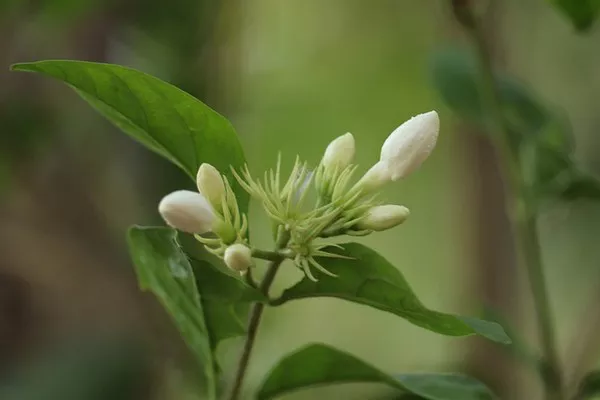In the vast and diverse world of plants, reproduction is a crucial aspect of their life cycle. While flowering plants, or angiosperms, often take center stage with their colorful blooms and pollination mechanisms, non-flowering plants exhibit equally fascinating strategies for reproduction. Non-flowering plants, including ferns, mosses, algae, and fungi, have evolved unique methods to perpetuate their species. In this article, we will delve into the intriguing world of asexual reproduction in non-flowering plants and explore the diverse mechanisms they employ to ensure their survival and proliferation.
Asexual Reproduction: A Survival Strategy
Asexual reproduction is a reproductive strategy employed by non-flowering plants to create offspring without the need for the fusion of gametes, or sex cells. This method has several advantages, particularly in environments where sexual reproduction may be challenging or inefficient. Asexual reproduction allows non-flowering plants to produce genetically identical offspring, ensuring the preservation of favorable traits and adaptation to specific ecological niches.
Reproduction in Ferns
Ferns are a prime example of non-flowering plants that reproduce asexually. While ferns do produce spores for sexual reproduction, they also have several mechanisms for asexual reproduction, such as rhizomes and bulbils.
Rhizomes: Ferns often spread through underground structures known as rhizomes. These horizontally growing stems give rise to new fronds and can extend over a considerable area. As the rhizomes grow, they can produce new ferns at various points, creating genetically identical clones of the parent plant.
Bulbils: Some fern species, like the Christmas fern (Polystichum acrostichoides), produce bulbils, which are small, bud-like structures located on the fronds. When these bulbils detach and fall to the ground, they can grow into new ferns, effectively cloning the parent plant.
Reproduction in Mosses
Mosses are non-vascular plants that reproduce asexually through specialized structures called gemmae cups and fragmentation.
Gemmae Cups: Gemmae cups are small, cup-like structures found on the gametophyte, the dominant phase of the moss life cycle. These cups contain gemmae, which are tiny, multicellular structures capable of developing into new moss plants. When raindrops hit the gemmae cups, they splash the gemmae onto the surrounding soil, allowing them to establish new moss colonies.
Fragmentation: Mosses can also reproduce asexually through fragmentation. When a part of the moss plant breaks off, such as due to physical disturbance or grazing by herbivores, it can develop into a new moss plant, essentially cloning the parent.
Reproduction in Algae
Algae encompass a wide range of photosynthetic organisms found in aquatic environments. Many algae species reproduce asexually through various mechanisms, including binary fission, fragmentation, and spore formation.
Binary Fission: Some unicellular algae, like the commonly studied Chlamydomonas reinhardtii, reproduce through binary fission. In this process, the cell simply divides into two genetically identical daughter cells. This rapid and efficient method allows algae to proliferate under favorable conditions.
Fragmentation: Multicellular algae, such as filamentous green algae, can reproduce through fragmentation. When a filament breaks into smaller segments, each fragment can develop into a new individual, effectively propagating the species.
Spore Formation: Certain algae species produce asexual spores, which are specialized cells capable of germinating into new algae. These spores are released into the environment and can grow into mature algae under suitable conditions.
Reproduction in Fungi
Fungi are a diverse group of non-flowering organisms that primarily reproduce asexually through the formation of spores and various vegetative structures.
Spore Formation: Fungi produce asexual spores, which are typically single-celled structures capable of germinating into new fungal individuals. These spores can be dispersed by wind, water, or other means and can give rise to genetically identical offspring.
Vegetative Structures: Fungi can also form vegetative structures for asexual reproduction. Examples include conidia in molds and sporangia in Zygomycota. These structures release spores or specialized cells that can develop into new fungal colonies.
Importance of Asexual Reproduction in Non-Flowering Plants
Asexual reproduction in non-flowering plants serves several critical ecological and evolutionary purposes.
Colonization: Asexual reproduction allows non-flowering plants to quickly colonize new habitats, especially in challenging environments where pollinators may be scarce or unpredictable.
Genetic Stability: Asexual reproduction produces genetically identical offspring, ensuring the preservation of advantageous traits.This stability is particularly valuable in environments with stable conditions.
Rapid Proliferation: Non-flowering plants can rapidly multiply through asexual reproduction, facilitating their persistence and survival in the face of changing environmental conditions.
Adaptation to Niche Environments: Asexual reproduction enables non-flowering plants to adapt to specialized niche environments by producing clones well-suited to those conditions.
Challenges and Limitations
While asexual reproduction offers numerous advantages to non-flowering plants, it also comes with certain limitations and challenges.
Lack of Genetic Diversity: Asexual reproduction leads to the production of genetically identical offspring, reducing genetic diversity within a population. This can be disadvantageous when environmental conditions change, as there may be limited genetic variation for adaptation.
Vulnerability to Disease: Clonal populations created through asexual reproduction are often susceptible to diseases that can spread quickly, potentially affecting the entire population.
Environmental Constraints: Asexual reproduction may be less efficient in unpredictable or extreme environments, where sexual reproduction’s genetic diversity can offer a survival advantage.
Conclusion
Non-flowering plants have developed a remarkable array of strategies for asexual reproduction, allowing them to thrive and persist in diverse ecological niches. From ferns and mosses to algae and fungi, these organisms have harnessed the power of asexual reproduction to colonize new habitats, maintain genetic stability, and adapt to changing environments. While this method has its limitations, it remains a vital and fascinating aspect of the life cycle of non-flowering plants, highlighting the remarkable diversity and adaptability of the plant kingdom.


